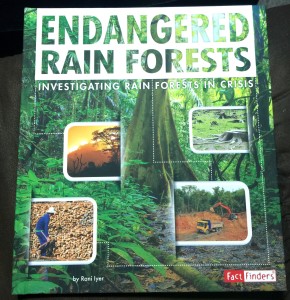
Over the last few weeks, some readers requested more clarity on how to get children to engage with nature in the digital age. Every parent and teacher out there is competing with the style, speed, and pace of computer games to gain the attention of their kids and students. Here are some ideas to engage and present nature to engage kids with nature.
Slowing down
Adults must model ways to include nature in all possible manner daily. Every time we leave the house, we are in a hurry to get somewhere. Everything we do has become time-constrained. Adults could take the lead in bringing nature into their awareness. It takes no more than 15-20 seconds. When we step outside the home, ask open-ended questions that will engage kids, and force them to pay attention to nature. Some examples of open-ended questions that bring awareness to kids:
- Where is the sun now?
- What do the clouds look like?
- How many different kinds of plants are around us?
- Breathe deeply and ask how does the air feel like?
By doing this consistently, kids learn that you value nature. They too, will slow down and engage in nature. This 20-second observation can lead to a deeply centered feeling.
Ask leading questions
Many adults think that they need to know answers to the questions that kids have. It is more powerful to ask kids leading questions and allow them to figure out on their own. During a walk, my 9-year old encountered a bird. It was hopping on the ground and had a distinct call.
“Do you know the bird?” he asked.
“I don’t,” I responded.
“That is too bad. I don’t know the name for this bird too.”
“We can always find out,” I said, “Let us observe the bird very closely and take note of the way the bird calls. We can go back and check the bird.”
After we got home, he went to the computer and began searching for bird calls. He found the ornithology website hosted by Cornell. He spent hours hearing the bird calls. When we came out for a walk, he was able to identify many birds by their calls!
Questions have power. Search for answers opens all kinds of doors and windows for everyone. Exploring the solution with your kids can be a powerful learning experience or memory. Pique the interest and curiosity of kids and ask questions that are age-appropriate and allow them to look up for answers—
What do this creature eat? Where and how do they sleep? What are their special abilities? Which animals are their natural enemies?
Allow them to play
Experts argue that we are keeping kids too sterile and it is not benefitting them. The delink from the environment may result in increased childhood allergies and increased health issues. Playing with dirt and allowing the kids to have simpler regime for hygiene helps them to build better immunity. Puddles, sticks, stones, cones, or peeling bark are enough for kids to play with. Kids explore their world while playing.
Too often, parents prevent interactions in nature by saying No!
“Don’t jump the puddle!”
“No, don’t bring that stick home.”
“Climb down from that tree.”
“No, you can get hurt.”
“Don’t kick that cone.”
“Don’t toss the stone in water.”
By preventing the kids from engaging in play in nature, we are stopping them from learning how to take the risk and handle it. Kids need to learn how to navigate and manage risks. They will have to learn to handle and minimize risks in their actions all their life. Nature play allows them to prepare for facing these challenges.
Share your encounters
Storytelling is a powerful way to connect with kids. You can share experiences about your contacts — the time you saw a full moon, the experience of seeing a total solar eclipse, the time you went cherry-picking, collected fireflies, or grew a tomato plant with seeds from a tomato you made salsa with and so on. Remind them to recant similar stories from their life and experience. Fill in, share pictures, and allow them to narrate their own stories.
Naming is important
Kids don’t like chores or tedious tasks. Give the task a happy name. ‘Trekking’ sounds like a chore. ‘Wandering’ or ‘Adventure’ makes the experience more interesting. Carefully choosing the names helps you to manage expectations and experience in an engaging manner. Providing ‘levels’ of experience is also engaging for kids. These levels allow the kids to be able to explore the nature at deeper levels and enable parents and teachers to disengage from directing the child gradually. Once the child becomes ‘hooked’ to nature, deeper levels of exploration will engage them continuously.
I hope you will try some of these strategies. Keep up with the wonderful work you are doing with kids.


